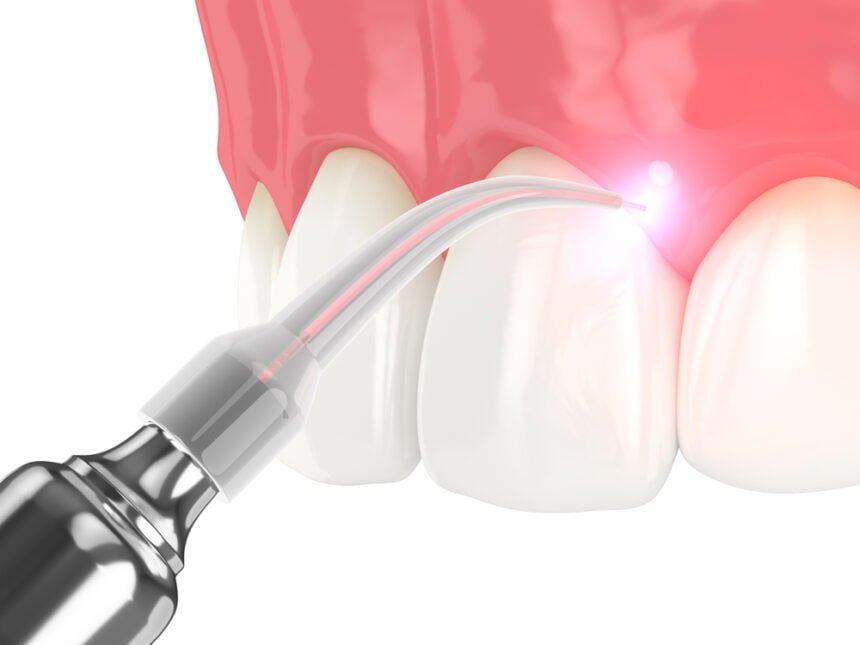Gum disease, scientifically known as periodontal disease, has widespread implications for many individuals. Originating from bacterial accumulation in the oral cavity, this ailment can evolve into inflammation of the gums, potentially leading to tooth loss if neglected. As such, recognizing its significance in overall dental health and the broader health system makes early detection and intervention imperative.
To guide you through early intervention, let’s delve into how to identify and treat gum disease.
Knowing The Signs Of Gum Disease
It can be challenging to identify gum disease in its early stages due to its often inconspicuous initial symptoms. However, doing so is paramount for proper diagnosis and treatment. Therefore, to safeguard your oral health, you need to watch out for the following symptoms:
- Red, Swollen, or Tender Gums: Early manifestations of gum disease often include inflamed and bleeding gums, which usually happen during brushing or flossing.
- Receding Gums: If your teeth appear elongated, it’s possible because your gums are receding, which is a clear indication of periodontal disease.
- Bad Breath: Persistent halitosis or an unpleasant taste can also be an underlying sign of gum disease.
- Loose or Shifting Teeth: As gum disease progresses to advanced stages, loss of bone supporting the teeth can cause them to become loose or shift positions.
- Pus Between Teeth and Gums: The emergence of pus can signify potential infection, which should be addressed immediately.
By knowing the signs of gum disease, you’ll know when to go to your dentist’s dental office for early diagnosis and treatment, which is key in preventing more serious complications.
Understanding The Risk Factors Of Gum Disease
Several elements amplify the potential of contracting gum disease. Being aware of these risks can aid in prevention. The following are some risks of this dental disease:
- Smoking or Tobacco Use: This habit is one of the primary culprits of gum disease. Tobacco aggravates gum tissue directly and undermines the body’s immune response. This makes it harder for the body to heal its tissues, including those in the mouth. Additionally, smokers are several times more likely to develop gum disease than non-smokers, making quitting this habit paramount for oral health.
- Hormonal Changes: Fluctuations in hormones during stages such as pregnancy, menstruation, menopause, and puberty can make gums more sensitive, thereby increasing susceptibility to gum disease. This vulnerability emphasizes the need for increased oral hygiene diligence during these phases.
- Diabetes: Individuals with diabetes face a dual challenge. An increased susceptibility to infections inherently makes them more vulnerable to gum disease. Furthermore, periodontal disease can make it tougher to control blood sugar levels, as infections can lead to insulin resistance. Hence, managing oral health is an integral aspect of diabetes care.
- Medications: Many prescription and over-the-counter medications can reduce saliva flow, including certain antihistamines, anti-depressants, and blood pressure treatments. Saliva serves as a natural deterrent for bacteria, washing away food particles and neutralizing bacterial acid. Reducing saliva increases the risk of gum disease, making it essential to be aware of this side effect and take compensatory measures.
- Other Illnesses: Diseases, especially those that compromise the immune system such as AIDS, can significantly impact gum health. Furthermore, treatments for certain conditions, such as cancer chemotherapy, can adversely affect gums. Individuals undergoing such treatments or with chronic illnesses should be especially vigilant about their oral health.
With these risk factors in mind, it becomes essential to adopt measures that can counteract their effects. It’s also important to discuss with dental professionals any of these potential risks to guide and create more personalized prevention and treatment strategies.
Identifying Prevention Strategies
Proactivity in maintaining gum health can drastically reduce the chances of gum disease:
- Maintain Oral Hygiene: Regular brushing and flossing can effectively remove plaque. You can also use antimicrobial mouthwash, which can be beneficial in maintaining good oral hygiene.
- Go To Regular Dental Checkups: Consistent appointments at a dental office can ensure professional oversight and cleaning, which is crucial for removing tartar and plaque build-up that may not be addressed with regular home care.
- Keep A Healthy Diet: Consuming a diet rich in essential nutrients, especially vitamins C and E, can support robust gum health.
- Avoid Smoking: As mentioned earlier, tobacco’s detrimental impact on gum health can’t be overstated.
Following the prevention strategies listed above can help keep your gums healthy and your teeth strong.
Discovering Early Treatment Options For Gum Disease
To halt the progression of gum disease, it’s crucial to address it promptly. Some treatment options include:
- Professional Cleaning: It’s recommended for the preliminary stages of gum disease, which involves meticulous removal of plaque and tartar from all tooth surfaces. It can help prevent further damage to the gums and teeth.
- Scaling and Root Planing: Under local anesthesia, this deep cleaning method eradicates plaque and smoothens the root surfaces, ensuring better gum adherence.
- Medications: Ranging from prescription mouthwashes to oral antibiotics, these medications can complement treatments like scaling and root planing in treating gum disease.
- Surgical Treatments: Advanced cases might necessitate surgical interventions like flap surgery for deep pocket tartar removal or bone and tissue grafts to address extensive damage.
Considering the treatment options listed above, you can prevent minor gum problems from becoming complicated ones.
The Systemic Implications Of Gum Disease
Gum disease affects the mouth and also has far-reaching implications for one’s overall health. Some systemic implications include:
- Cardiovascular Concerns: Persistent inflammation from advanced gum disease is potentially linked to heart ailments, arterial blockages, and strokes.
- Diabetes Management: For people with diabetes, managing gum disease is crucial as untreated, periodontal issues can exacerbate blood sugar control, creating a vicious cycle of health challenges.
By understanding the systemic implications of gum disease, you can take the necessary steps to safeguard your overall health.
Conclusion
Comprehensive understanding and early intervention in gum disease cases are crucial. By keeping the information mentioned above in mind, you’ll be equipped with knowledge about its symptoms, risks, and treatments, which can be transformative. Remember, proactive measures and consistent checkups at a dental office remain the cornerstone of optimal gum health.









